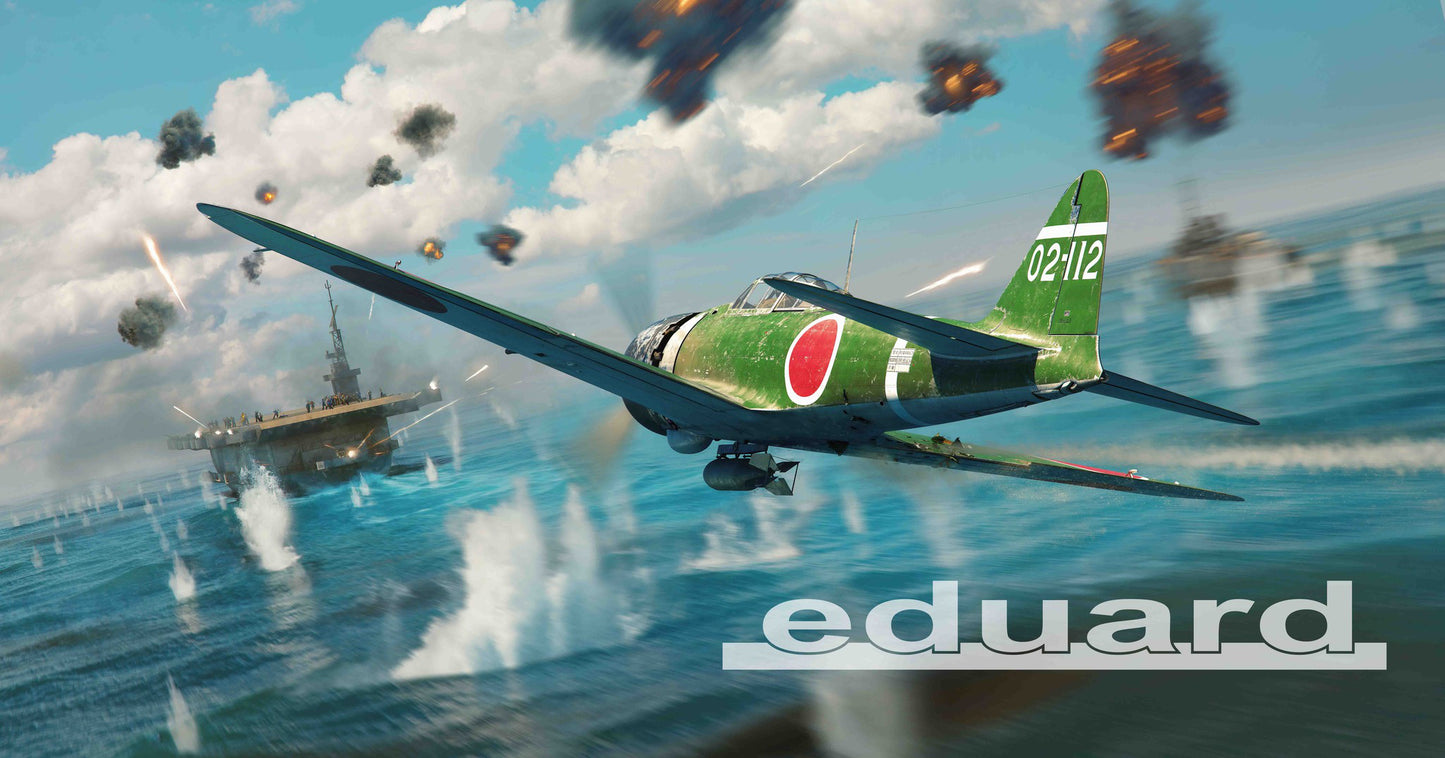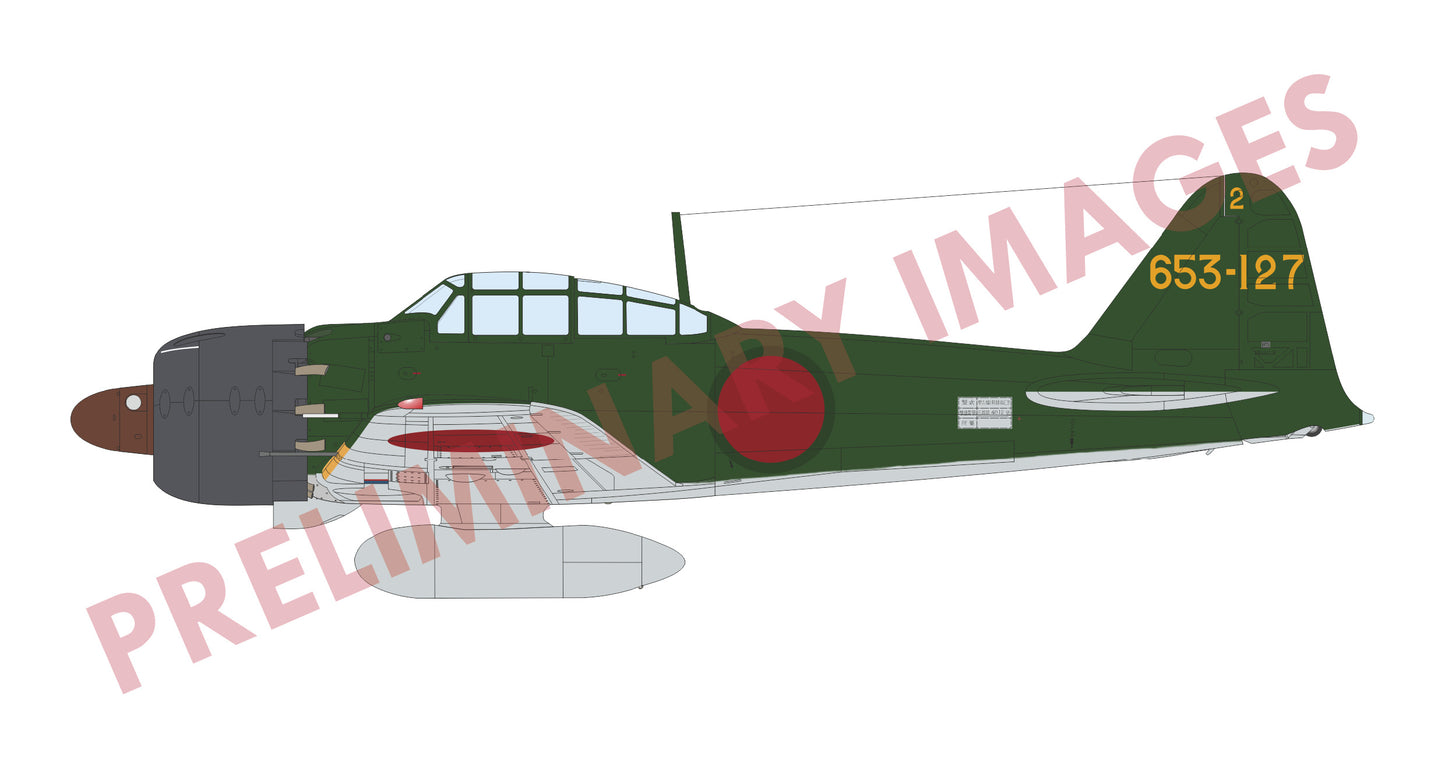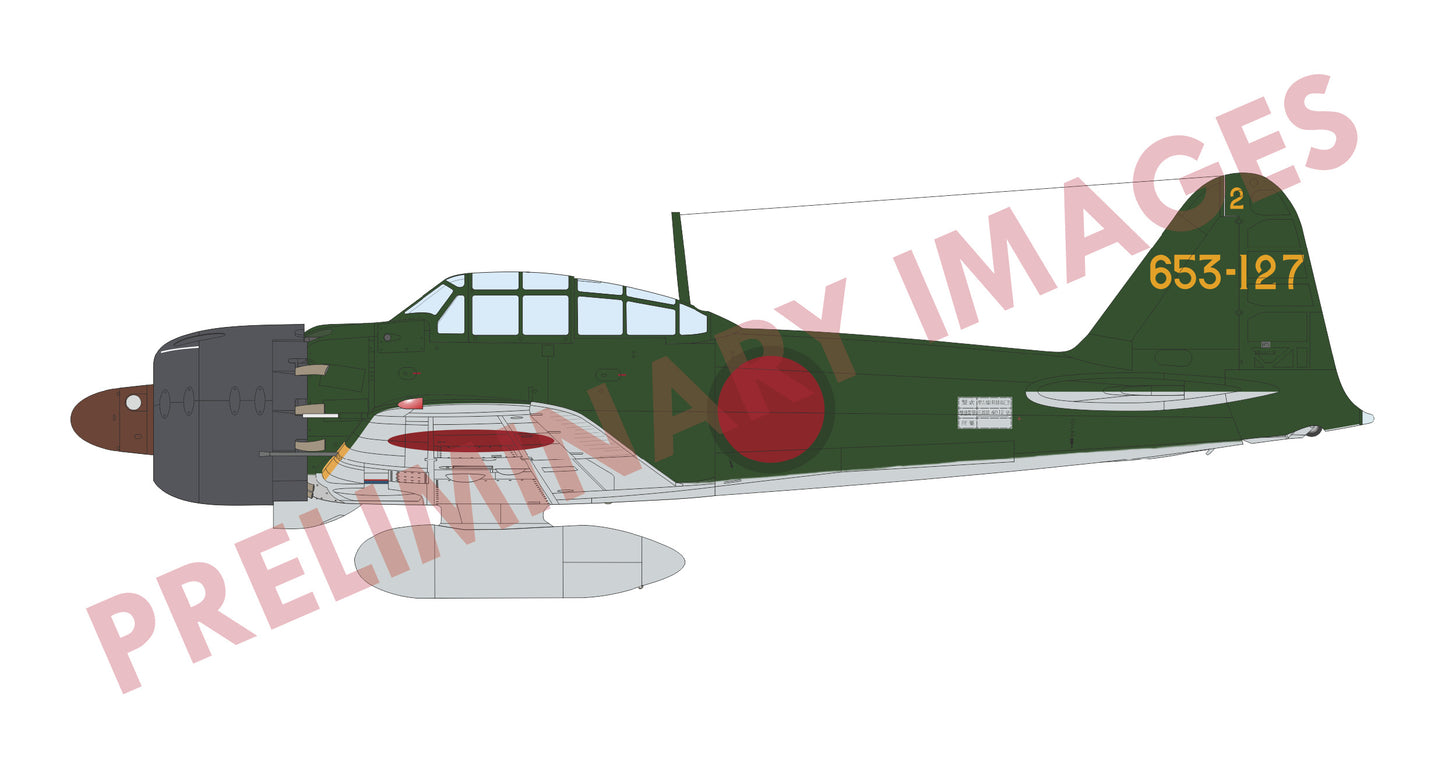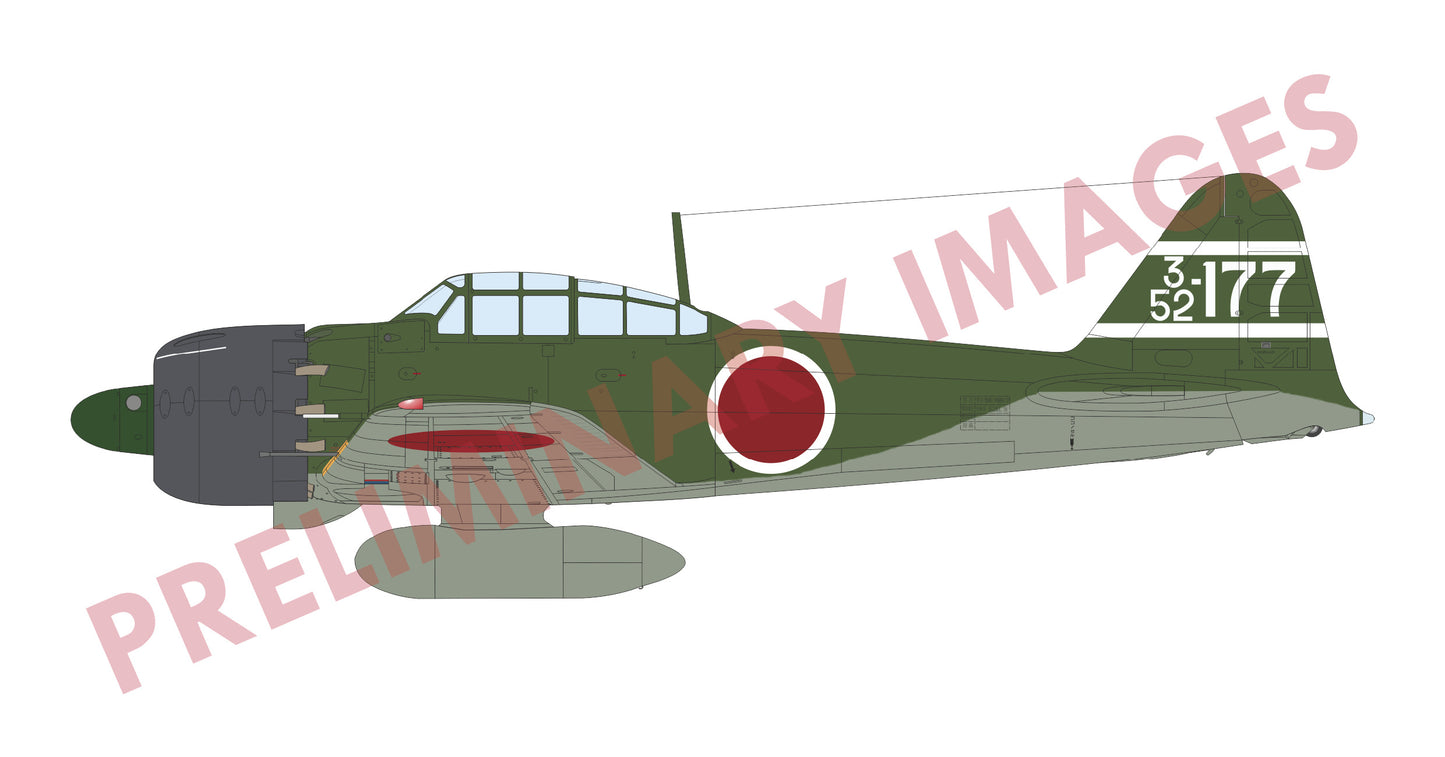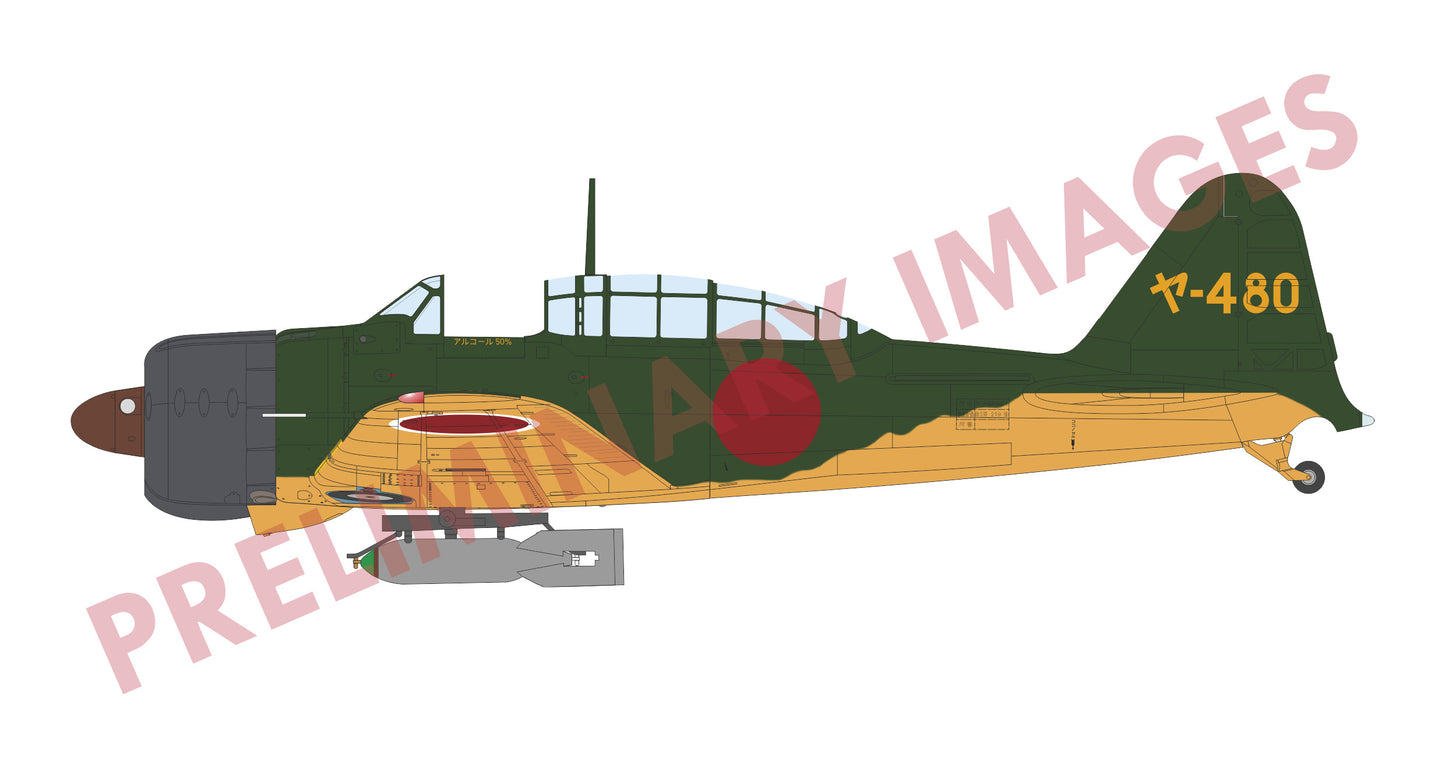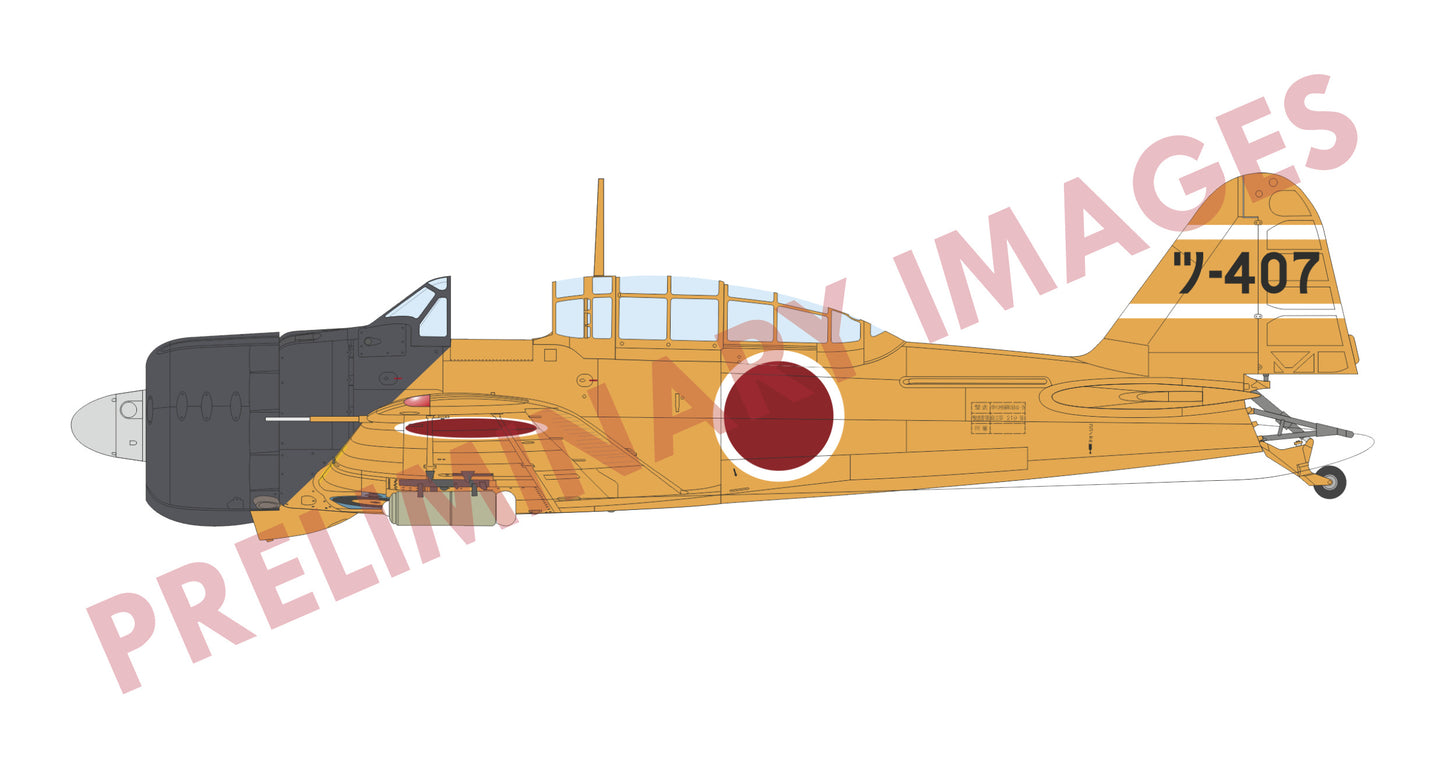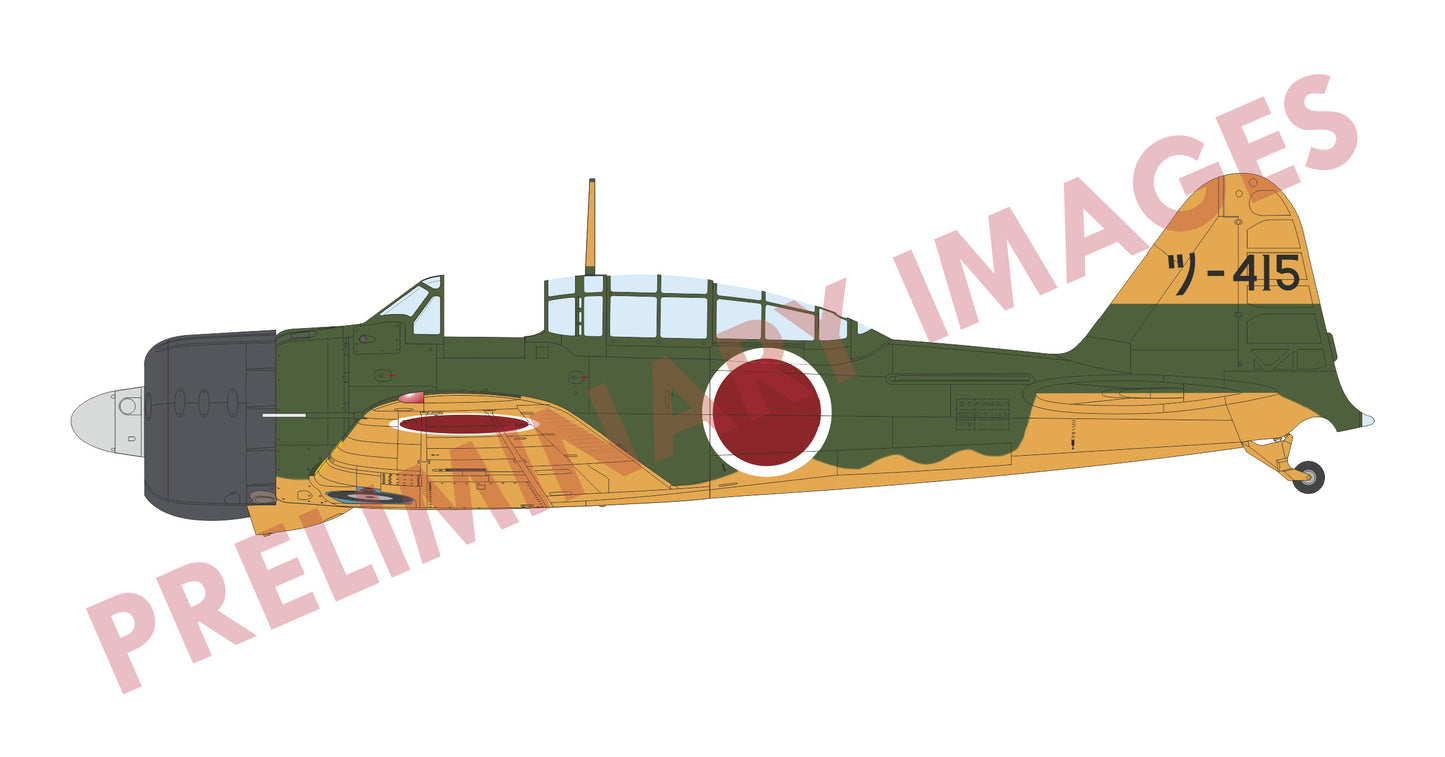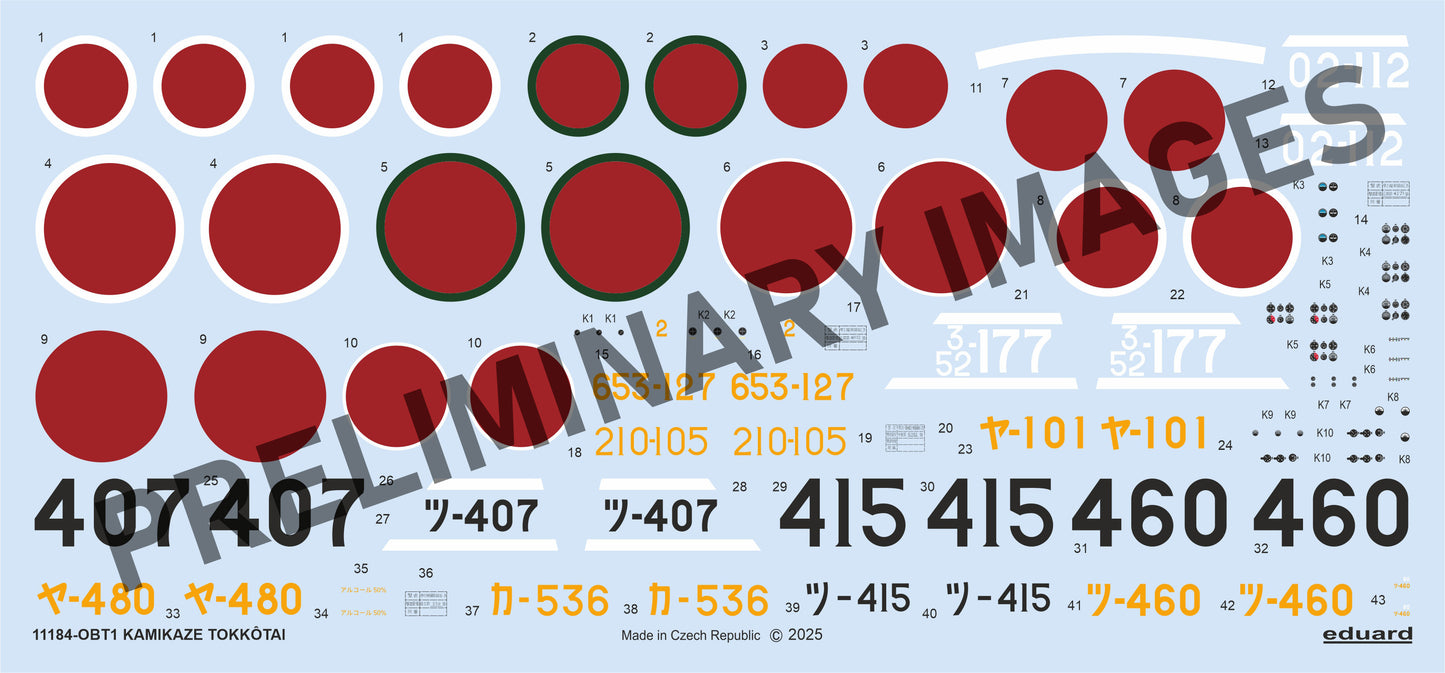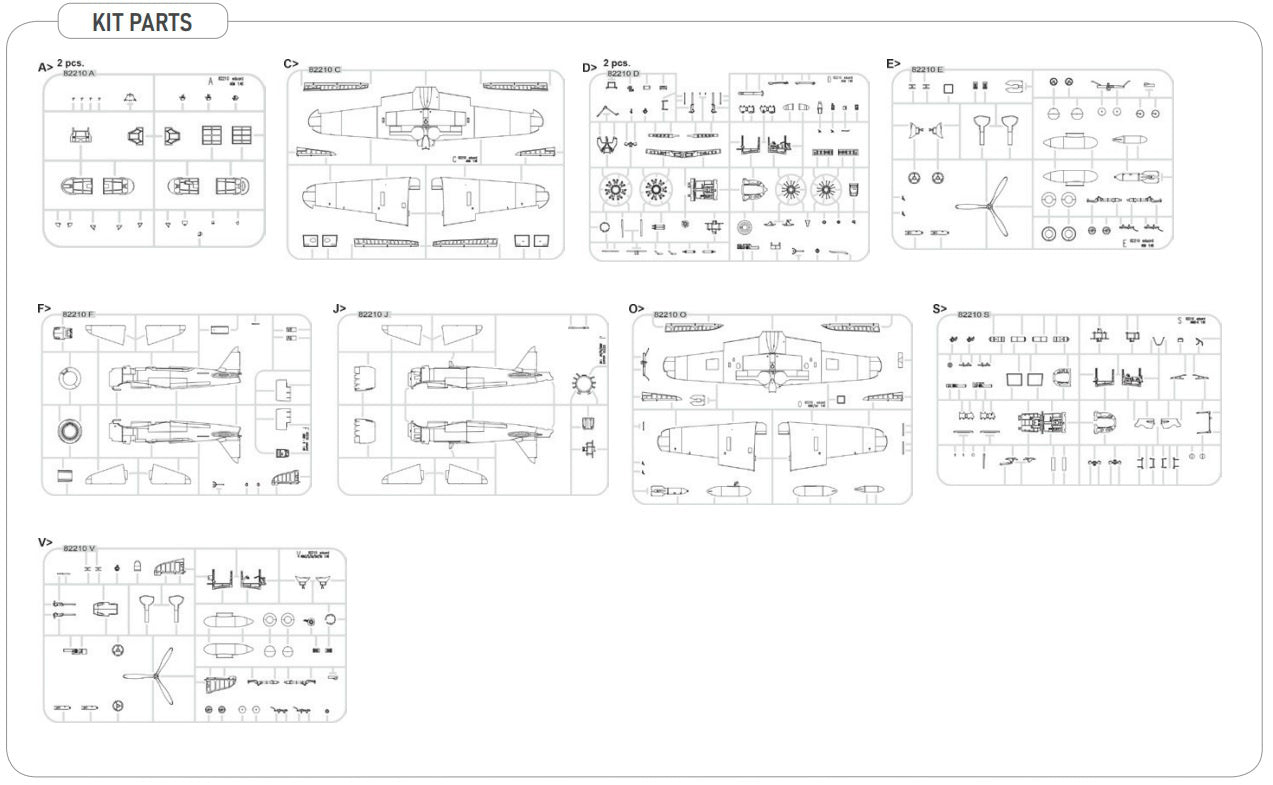ScaleCraft Studios
Eduard 1/48 KAMIKAZE TOKKOTAI IJN Special Attack Units DUAL COMBO (In Stock June, Price TBC)
Eduard 1/48 KAMIKAZE TOKKOTAI IJN Special Attack Units DUAL COMBO (In Stock June, Price TBC)
Couldn't load pickup availability
The History and Development of the A6M5 Zero Type 52 & A6M2-K Two-Seat Trainer
The Mitsubishi A6M Zero was one of the most famous and effective fighter aircraft of World War II, serving as the backbone of the Imperial Japanese Navy’s air forces. Introduced in 1940, the Zero was renowned for its agility, range, and combat effectiveness. However, as the war progressed, the design underwent numerous modifications to keep pace with advancing Allied aircraft.
A6M5 Zero Type 52
By 1943, the original A6M2 and A6M3 models were struggling against newer, more powerful American fighters such as the F6F Hellcat and F4U Corsair. Mitsubishi developed the A6M5 Type 52, which featured several key improvements:
-
Shortened, thicker wings to increase speed and improve maneuverability.
-
Exhaust flame dampers to reduce visibility at night.
-
Upgraded armament, consisting of two 20mm Type 99 cannons and two 7.7mm Type 97 machine guns.
-
Reinforced airframe to withstand higher speeds and greater stress.
Despite these enhancements, the A6M5 remained inferior to newer Allied aircraft, particularly in terms of speed and durability. However, it continued to serve in front-line combat and was often used in kamikaze (tokkōtai) attacks as Japan’s strategic situation deteriorated.
A6M2-K Two-Seat Trainer
The A6M2-K was a trainer version of the Zero, developed by Hitachi and Nakajima to help transition pilots into high-performance combat aircraft. With Japan facing pilot shortages by the mid-war period, the A6M2-K was essential for training new aviators.
Notable modifications included:
-
A second cockpit with dual controls, allowing instructors to guide trainees.
-
Bright orange training paint schemes to distinguish them from combat aircraft.
-
Reduced armament, retaining only minimal weaponry for familiarization flights.
The A6M2-K played a crucial role in preparing new pilots, many of whom would later be assigned to kamikaze squadrons as Japan’s war effort became increasingly desperate.
Eduard 1/48 "KAMIKAZE TOKKOTAI" IJN Special Attack Units Dual Combo Kit
Eduard’s 1/48 KAMIKAZE TOKKOTAI Dual Combo kit provides modelers with two highly detailed Zero variants that played key roles in Japan’s Special Attack Units during World War II.
Kit Features
-
Two complete model kits: Includes both the A6M5 Type 52 and the A6M2-K trainer.
-
Highly detailed panel lines and rivet details for a realistic finish.
-
Comprehensive decal options for multiple kamikaze units, including aircraft from major special attack operations.
-
Photo-etched parts and canopy masks for added realism and ease of assembly.
-
Extensive cockpit detailing, including accurate instrument panels and seating arrangements.
Build and Display Potential
With its historical significance and striking paint schemes, this kit offers an opportunity for both experienced and intermediate modelers to create an impactful display piece. The inclusion of the A6M2-K provides insight into the rigorous training process that led many young Japanese pilots to their final missions.
Conclusion
The A6M5 Zero Type 52 and A6M2-K played pivotal roles in the closing years of World War II. Eduard’s KAMIKAZE TOKKOTAI Dual Combo kit captures these aircraft in stunning detail, making it a must-have for modelers interested in the history of Japan’s Special Attack Units and late-war aviation.
Share
